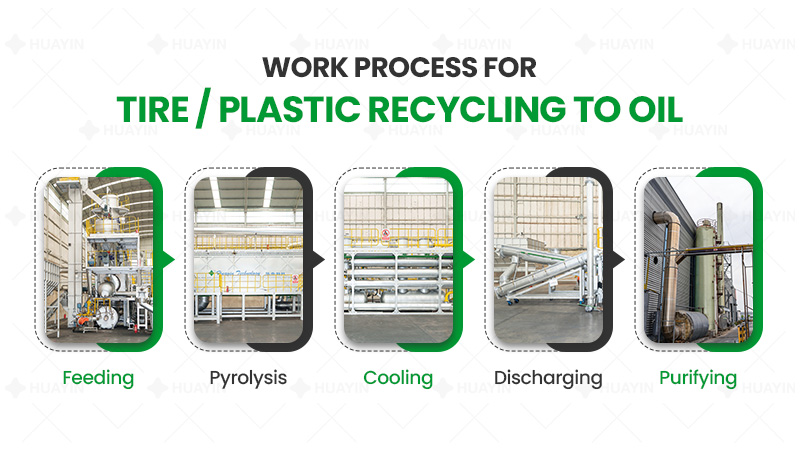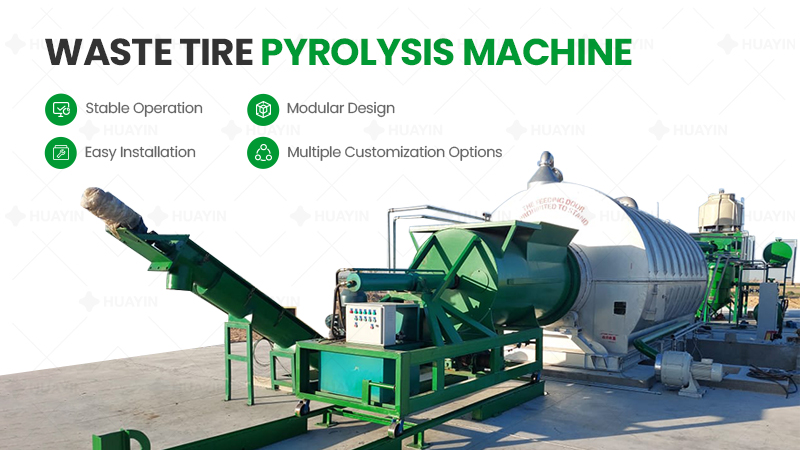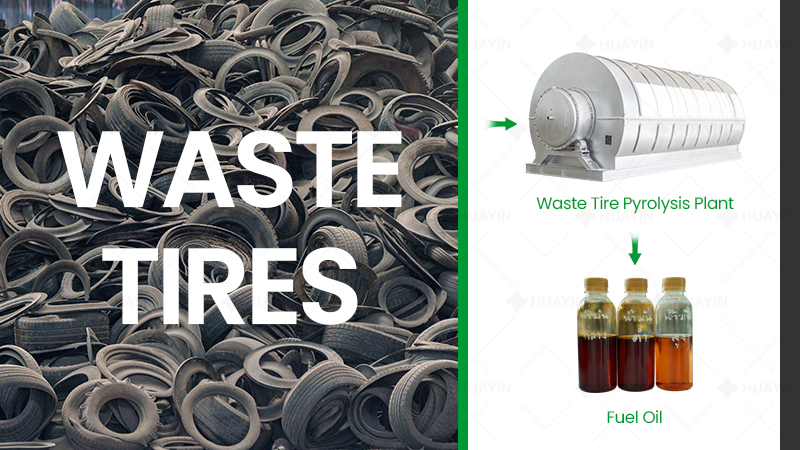The core of pyrolysis is a chemical recycling process, involving to pyrolyze organic materials, such as plastic waste, in the non-oxygen condition. With the high temperature pyrolysis, it can break plastic waste into smaller molecules to generate three main by-products: plastic pyrolysis oil, carbon black and combustible gas.
Compared with traditional burning treatment, pyrolysis can minimize emissions and maximize the recovery of energy-rich products during the whole recycling process, contributing it to a preferable alternative for plastic waste recycling.
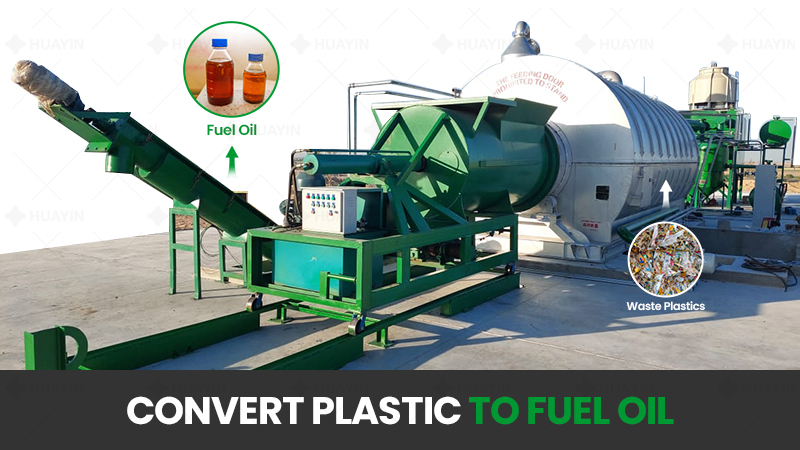
How Pyrolysis Works for Plastic Waste Recycling
The pyrolysis process for plastic waste recycling typically follows a series of steps:
1. Waste Preparation: First, plastic waste is sorted to remove non-plastic contaminants like metals, glass, and organic materials. It is then shredded into smaller pieces to increase surface area, ensuring more efficient heat transfer during the pyrolysis reaction.
2. Pyrolysis Reaction: The prepared plastic fragments are fed into the pyrolysis reactor, where they are heated to a certain high temperature under anaerobic conditions. As the temperature rises, the polymers undergo thermal cracking, breaking down into simpler hydrocarbons.
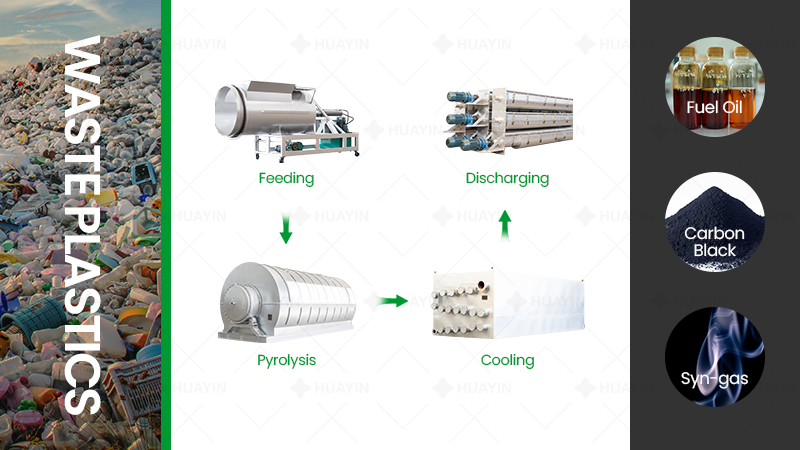
3. Condensation and Separation: The oil gases produced during the reaction are cooled in a condensation system, converting them into liquid pyrolysis oil. The non-condensable gases (syngas) are often captured and used to fuel the pyrolysis reactor itself, making the process energy self-sufficient in many cases. The solid carbon black is collected separately and can be used as a fuel or in other industrial applications.
4. Exhaust Gas Purification: All exhaust gas generated during the whole process will be purified to meet the emission standards in various countries.
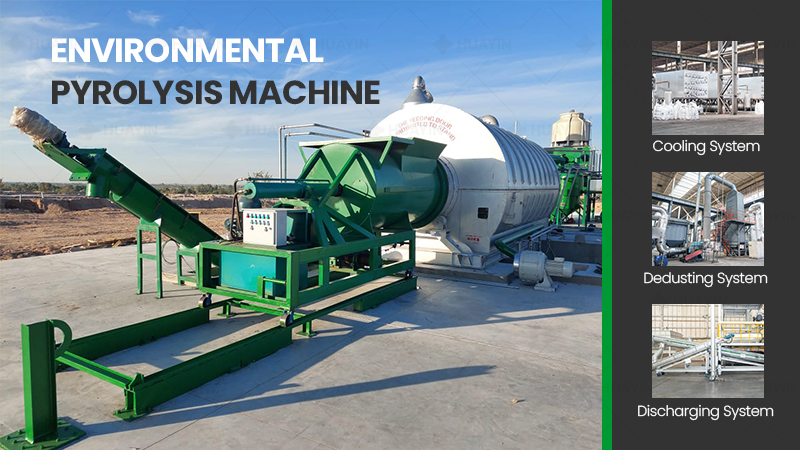
The Advantages of Pyrolysis Technology for Plastic Waste Recycling
1. Handling Mixed Plastics: Unlike mechanical recycling, which often requires strict sorting of plastic types, pyrolysis can process mixed plastic waste, including difficult-to-recycle plastics like HD/LD PE, PS, PP, ABS plastics, plastic bags, waste woven bags, etc. . This flexibility significantly reduces the challenges associated with waste sorting.
2. Resource Recovery: The pyrolysis oil produced can be used as a substitute for fossil fuels in power generation, cement plant, steel plant, brick plant, or further refined into transportation fuels such as diesel. Carbon black can be used as reinforcing agent in rubber products, ink production, pigment applications and other industrial processes.

3. Reduced Environmental Impact: By diverting plastic waste from landfills and incinerators, pyrolysis helps reduce soil and water pollution, as well as greenhouse gas emissions. It also reduces our reliance on virgin fossil fuels, contributing to a lower carbon footprint.
In conclusion, pyrolysis technology is a good choice for plastic waste recycling, if you are interested, welcome to consult Huayin, we can provide multiple scheme to help you select suitable plastic pyrolysis plant with various capacities and configurations. Looking forward your inquiry!

